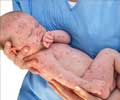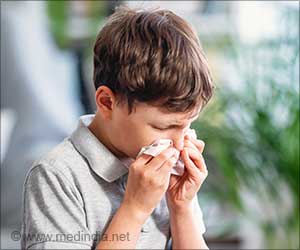
‘Origin of measles finding could inform COVID-19 research.’
Tweet it Now
Alongside the findings published in Science, Australian evolutionary experts from the University of Sydney and University of Melbourne have published a complementary Perspective, proposing that similarly refining research about when COVID-19 and other zoonotic diseases emerged will assist in understanding how such pathogens jump from animals to humans. University of Sydney Professor Simon Ho, corresponding author of the Science commentary, said the research could help efforts to pinpoint the time of emergence of measles in humans.
"Obtaining genomic data from RNA viruses such as the measles virus, which degrade rapidly in the environment, continues to be extremely challenging," said Professor Ho from the School of Life and Environmental Sciences.
"The sequencing of this measles genome by Ariane Düx, Sébastian Calvignac-Spencer and their colleagues is a profound achievement.
"It's very difficult to pinpoint exactly when and where pathogens such as viruses and bacteria jump into humans. Sometimes these jumps happen and they fizzle out. But sometimes they take hold and spread across the globe.
Advertisement
Professor Ho said although the human COVID-19 SARS-CoV-2 virus split from its closest known relative - another coronavirus from a horseshoe bat - about 30 to 40 years ago, the jump to humans most likely happened more recently.
Advertisement
"The chance of a virus jumping between species will generally increase with the amount of contact," said Professor Ho, referring to the fact that as a species, human civilization is increasingly encroaching into the habitat of wild animals.
"We can see this process happening in zoos, where viruses can jump between species that would not normally be found together in the wild.
He said: "More work needs to be done to understand the diversity of viruses and their distribution in wildlife."
Source-Eurekalert













